If you want to know the history of Jews in China, this 11-day China Jewish tour will be your best choice. You will start your Jewish tour from Beijing. After visiting the most well-known attractions in Beijing, you can go on your Jewish tour with Kaifeng and have a look at the Nan Jiaojing Hutong. Nan Jiaojing Hutong has witnessed the Jews’ history in Kaifeng, making you better understand their life in China. This Jewish tour from Beijing to Shanghai will surprise you with the Shanghai Jewish Refugees Museum. This museum will show you how kind China was to the Jewish refugees when they suffered from Nazi slaughter, giving you a chance to know how the Jews in Shanghai struggled to live. The existing videos about the Jews and some objects that they used will make you know Jews more and have a deeper understanding of that history. Escape from the hustle and bustle of work and let's take a tour to China.

As soon as you arrive in Beijing, your local guide will welcome you warmly at the airport and take you to the hotel. Then you can have a rest at the hotel and prepare yourself for the next day.
In the morning, you will explore Tian’anmen Square. The Tian’anmen Tower, which is the symbol of the Tian’anmen Square, was used to be the front gate of the imperial city of the Ming (1368-1644) and Qing (1636-1912) Dynasties. It was originally named as “Chengtian Gate”. “Chengtian” means that the power of the emperor is given by heaven. Tian’anmen Square is the place where many historic events were held, such as the founding of the People’s Republic of China, the National Day military parades, and the 100th anniversary of the Communist Party. The National Flagpole, the Monument to the People’s Heroes, and the Chairman Mao Memorial Hall are all in the square.
Then you can have a tour around the Forbidden City (closed each Monday) which was built in the Ming Dynasty. It is centered by three major palaces, namely the Hall of Supreme Harmony, Hall of Central Harmony, and Hall of Preserving Harmony. 24 emperors used to live in the Forbidden City and Puyi was the last emperor living here. Puyi’s lifetime is full of legend. He once ascended the throne and abdicated two times. Can you imagine a three-year-old child being the emperor of a country? The three-year-old Puyi didn’t even know how to eat by himself. Though having power and wealth, Puyi is far from a carefree emperor. The changes in that era made him suffer a lot. He enjoyed a luxurious life in the early days, however, later on, he had to live as an ordinary person and tried to do everything by himself. If you walk around the Forbidden City, you may understand how luxurious the emperor’s life was and how magnificent the palaces are. You may also notice that the red walls and yellow tiles are the most prominent architectural features. Why red and yellow are used so frequently here? In the course of history, Chinese ancestors regarded the combination of red and yellow as imperial and solemn. The Forbidden City was the highest rulers’ residence. It is no wonder that red and yellow are seen everywhere.
After lunch, you can visit the Temple of Heaven built in the Ming Dynasty. It covers an area of 2.73 million square meters and is the place where the emperors used to offer sacrifice to heaven for a good harvest. There is an interesting fact about the Temple of Heaven. The architectures in this divine sacrificial altar have everything to do with the number nine. For example, the steps in the Temple of Heaven are the multiples of nine. You can count the steps in front of one building here, and they must be 9, 18, 27 or other number of nine’s multiples. That is because nine is believed to be the largest and the holiest number in China. You will learn more interesting history from your guide.
After visiting the Temple of Heaven, you can go to the Summer Palace. The Summer Palace is a royal garden built in 1750 in the Qing Dynasty and destroyed in the later war. In 1902, to rebuild the Summer Palace to enjoy her retirement life, Empress Dowager Cixi even embezzled the military expenditure to make it more resplendent. The Summer Palace imitated the architectural style of the building in the South of China. You can see the Hall of Benevolence & Longevity, Hall of Jade Ripples, Hall of Joyful Longevity here. Apart from these, you can also go to the Grand Theater at Garden of Virtue and Harmony, the Long Corridor, the Marble Boat, Bronze Ox, and the Seventeen-Arch Bridge. You can appreciate the beautiful sceneries of the interlaced lakes and pavilions. Walking through the Summer Palace, you will enjoy the tranquility of the garden and find your inner peace.
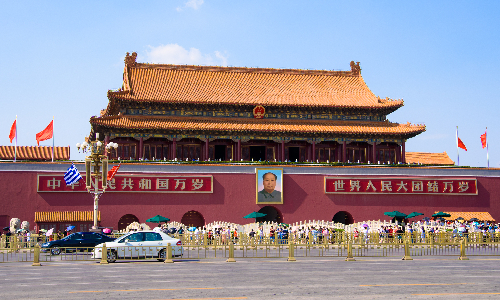
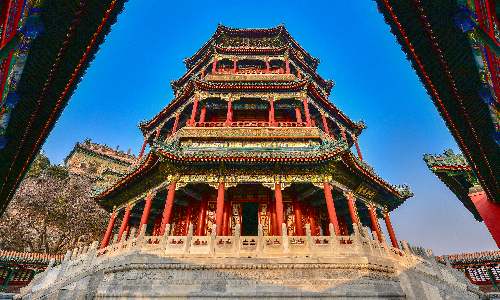
This morning, we will drive north for about an hour to the Sacred Way, which is about 45 kilometers away from the city center. The Sacred Way, built in the 1540s, is a part of Ming Tombs where emperors and empresses in the Ming Dynasty were buried. It is 7.3 kilometers in length. As you walk on the Sacred Way, you will not miss the large stone carvings of humans and animals on both sides. The stone statues act as the guards of honor of the late emperors. In ancient China, the emperors were the supreme rulers of the country, and when passed away, they required to be treated the same as they were alive including guards of honor. The statues were arranged here to show the paramount status of the emperors. The statues along the way are both animals and standing figures. The animals are lions, Haechi (a legendary beast that represents justice in ancient times), camels, elephants, Kylin (a legendary animal that represents luck in ancient times), and horses. The standing figures include civilian officials, generals, and meritorious officials. Looking at the solemn scenery, you will get a glimpse of that feudal age in the Ming Dynasty.
After visiting the Sacred Way, we will drive northwards for less than 20 minutes, heading to the Ding Tomb. Ding Tomb is where the 13th emperor of the Ming Dynasty and his two empresses were buried. It took artisans 6 years (from 1584 to 1590) to finish. As the only excavated tomb of the Ming Tombs, the Ding Tomb covers an area of 180,000 square kilometers. The excavation gives you a chance to look at how marvelous the underground palace of Ding Tomb is. The palace lies 27 meters deep, with an area of 1,195 square meters. The arched stone rooms in the palace can bear great pressure to prevent the underground palace from collapsing. Besides, its great water-proof and drainage system has protected it from water leakage for 400 years.
After lunch, we will head to the Badaling Great Wall. It will take us about an hour to drive northwest to the Great Wall, which is 38 kilometers away from the Ding Tomb. The Badaling Great Wall was built in 1505. The Great Wall is one of the eight wonders in the world for how it was built and resources and manpower it consumed. And it was an important military pass in ancient China. The Badaling Great Wall has witnessed many historical events. There is a famous rock here named Looking-toward Beijing Rock. It is where Cixi and her son, Emperor Guangxu stood when Beijing was invaded. Cixi looked toward Beijing with sorrow and wondered when they could return to their home. That’s how the rock was named. It is no doubt that you will enjoy the fabulous huge project as well as the rich history of the Badaling Great Wall.
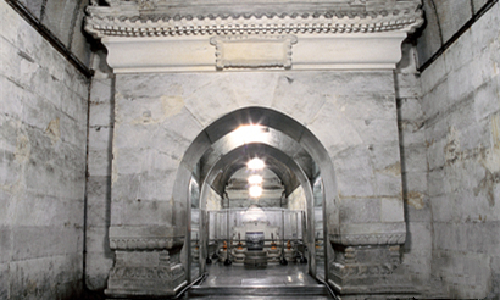
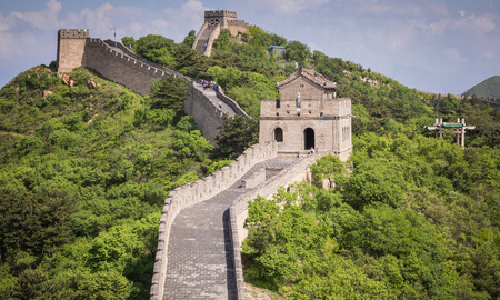
 Zhengzhou
Zhengzhou Today you will end your journey in Beijing. After breakfast, you will be transferred to the airport and take the estimated flight CA1813 14:50/16:45 heading to Zhengzhou. As soon as you arrive in Zhengzhou, your tour guide will sincerely welcome you at the arrival lobby. Then, you can follow the guide to the hotel prepared for you and have a good rest, getting ready for the journey tomorrow.
 Kaifeng
Kaifeng After breakfast, we will drive eastward from Zhengzhou to Kaifeng, which is 77 kilometers away, for about 1.5 hours. Then you can start your long-expected Kaifeng Jewish tour. Our first destination is Nan Jiaojing Hutong. This place has witnessed the history of Jews living in Kaifeng. It is said that a Jewish community and a Jewish church came to Kaifeng during the Song Dynasty (960-1279), acting as a commercial bond between China and other countries through the Silk Road. According to scholars, the ancestors of the Jews in Kaifeng came from Persia or India in the Song Dynasty. When they arrived in China, they called themselves the followers of Cileye (came from the transliteration of Israel) and strictly adhered to their religious disciplines to keep their blood pure. However, after a long time of settlement in Kaifeng, the Jews got along well with the Chinese and were deeply influenced by Chinese culture. In the Ming Dynasty, the Jews began to assimilate into the local culture, getting married to the local people, and changing their names to Chinese names. Because of the assimilation, the population of Jews was decreasing and the Jewish consciousness lost gradually. Especially in 1850, when the last Rabbi (A person who is qualified by academic studies of the Hebrew Bible and the Talmud to act as spiritual leader and religious teacher of a Jewish community or congregation.) of the Jewish community passed away, none of the Jewish believers recognized Hebrew. As a result, the period of Jewish religious life and their self-identification came to an end. After visiting the Nan Jiaojing Hutong, you will have a strong feeling of how the history of the Jews in Kaifeng develops.
In the afternoon, you will go to the Kaifeng Museum (closed each Monday). The museum was built in 1962, covering an area of 54,286 square meters. It is a comprehensive museum integrating exhibitions, relic collections and protections, as well as scientific research. There are four exhibition halls, which Fine Stone Carvings Exhibition Hall, New Year Wood-block Painting of Zhuxian Town Exhibition Hall, Ancient Civilization Display of Kaifeng, and Historical and Cultural Exhibition Hall of the Capital of the Northern Song Dynasty (960-1127). The last exhibition hall is a must-see. You should keep in mind that the Northern Song Dynasty is one of the most prosperous dynasties in China’s history. Kaifeng, as its capital, is the center of economy, culture, and technology. Its developed economy reached a peak in Chinese feudal society. This exhibition will show you the busiest ancient capital, Kaifeng, at that time. And you are sure to have a unique experience here.
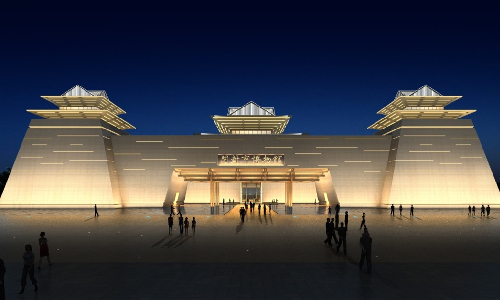
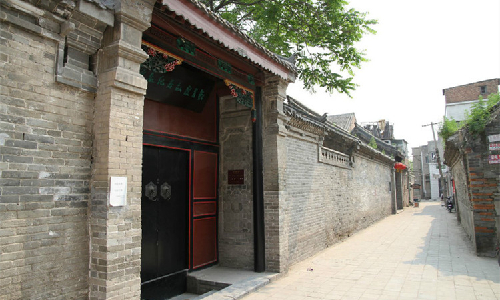
 Luoyang
Luoyang In the morning, we will drive southwest for about 2 hours to Shaolin Temple, which is 156 kilometers away. Shaolin Temple was built in the Northern Wei Dynasty (386-534), covering an area of 57,600 square meters. It is said that Emperor Xiaowen ordered to build the temple to settle an Indian monk whom he admired. Shaolin Temple is the cradle of Chinese Buddhism and Kung Fu. Therefore, if you come here, you can learn some moves of Shaolin Kung Fu from the warrior monks here. You can show your friends your Kung Fu back home. They will be amazed at you. Then you can go to the Pagoda Forest, which is at the foot of the Shaoshi Mount, 300 meters away from Shaolin Temple. The Pagoda Forest is one of the largest pagoda forests in China. The eminent monks and Buddhist abbots of this temple are buried here. There are 256 existing pagodas since the Tang Dynasty (618-907). The architectural styles of various dynasties and the stone carvings are precious information in researching the history. You can have a closer look at the inscriptions on the pagodas to appreciate the profound knowledge of Buddhism.
After lunch, we will drive northwest to Luoyang, which is 80 kilometers away for about 1.5 hours. Your tour guide will take you to the hotel and you can refresh yourself with a long sleep. If you are not tired, you can have a walk around the hotel and enjoy the night scenery of Luoyang.
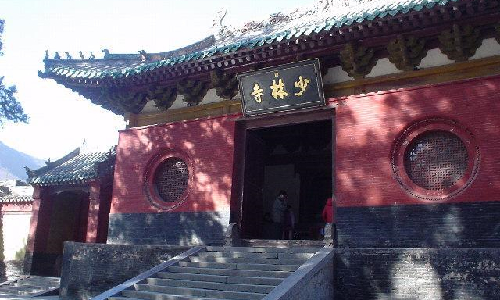
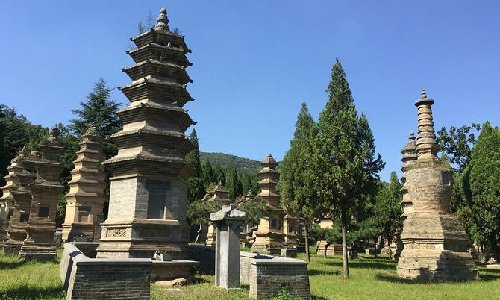
 Xi’an
Xi’an After breakfast, we will drive southward for about 25 minutes to the Longmen Grottoes, which is 16 kilometers away. The Longmen Grottoes were built in the Northern Wei Dynasty. With more than 10 dynasties, about 1,400 years of construction, Longmen Grottoes is the longest-built grotto in the world. It is one kilometer in length with more than 2340 shrines and 110,000 statues, some of which were built for the royal family. There is one statue called the Giant Vairocana Buddha, which means ubiquitous brightness. You will feel amazed as soon as you see the statue because it is 17.4 meters high with a 4-meter-high head. And its ears are as long as 1.9 meters. I bet you will marvel at the superb craftsmanship of its carving. It is said that this Buddha was carved according to the look of Empress Wu Zetian, who is also the first and the only female emperor in ancient China. The Giant Vairocana Buddha is also known as the “Mona Lisa of the East”. No matter which position you stand in, you will find out that this Buddha is smiling at you.
After lunch, your tour guide will accompany you to the train station. You will take the estimated train G1921 15:05/16:40 to Xi’an. Upon your arrival, your tour guide will pick you up at the station and you will be transferred to the hotel. You can have a good rest and prepare yourself for the journey the next day. Xi’an is one of the four capitals of ancient China with numerous places of interest. Xi’an covers an area of 10,108 square kilometers with a population of about 12.9 million. It has been the capital of more than ten dynasties. If you want to know more about the history of China, Xi’an is absolutely a city that you can’t miss.
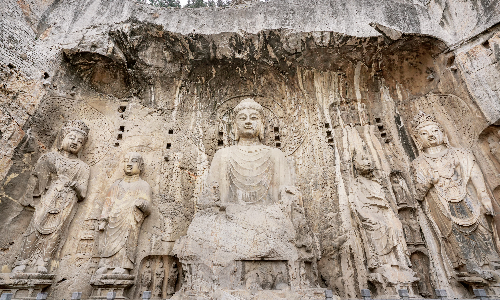
In the morning, your first destination is the Terracotta Warriors and Horses Museum. We will drive northeast to this place, which is 41 kilometers away. It will take us about 50 minutes to get to the museum. The Terracotta Warriors and Horses were made as sacrificial objects of Qin Shi Huang, the first emperor of the Qin Dynasty (221-207). The Terracotta Warriors and Horses were discovered in the 1970s. There are more than 7000 warriors and 100 horses found in the tomb. All these warriors and horses had beautiful colors when they were unearthed, however, after 10 seconds, the colors vanished because of oxidization. If the colors still exist, these figures will be as natural as though they were living. It is commonly said that Qin Shi Huang intended to make people buried alive with him when he was dead. It is no doubt that this idea is cruel and will sacrifice the happiness of hundreds of families. Therefore, the prime minister (in feudal China) at that time tried every means to persuade the emperor to bury the terracotta warriors and horses instead of living people on the pretext of stabilization of the country. Therefore, the Terracotta Warriors and Horses you will see saved lots of people in the Qin Dynasty.
After lunch, you will head to the Big Wild Goose Pagoda. This pagoda was built in the Tang Dynasty. Here is something about the origin of this ancient pagoda. Xuanzang, a monk, travelled to ancient India for Buddhist scriptures. When he returned, he directed the building of the pagoda to store the scriptures. Why the Big Wild Goose Pagoda was so named? There are several legends about its name. The most common one is that Xuanzang was saved by a wild goose. Xuanzang lost his way in the desert one day on the way to India. He had drunk all the water, and if he couldn't find a way out, he would definitely die of thirst. Just when Xuanzang wanted to give up, a wild goose flew above his head and hovered. This bird seemed to want to guide him, so he followed it and saw a river soon after walking. Therefore, Xuanzang named this pagoda the Big Wild Goose Pagoda to express his gratitude.
After visiting the pagoda, we will go to the Old City Wall. The Old City wall was first built in the Sui Dynasty (581-618). With time passing by, the original wall was damaged. What we see now was rebuilt in 1370 in the Ming Dynasty. It is 12 meters high and about 14 meters wide, having a circumference of 13.74 kilometers. Local people usually stroll around the wall after dinner. It is a good place for you to enjoy the city view of Xi’an.
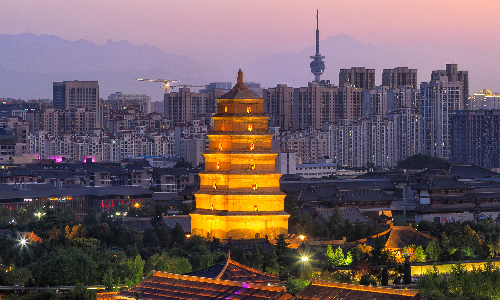
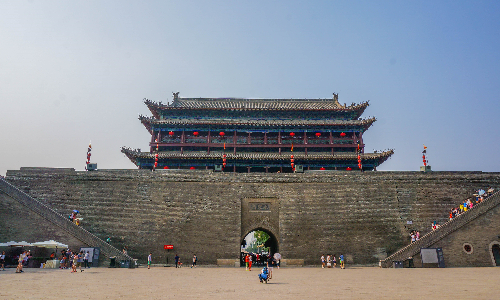
 Shanghai
Shanghai Today will be your last day in Xi’an. After breakfast, you will be transferred to the airport and take the estimated flight MU2157 12:00/14:15 to Shanghai. Your tour guide will be waiting for you at the arrival lobby and take you to the Bund. The Bund is located at the west bank of the Huangpu River. It is 1.5 kilometers in length. In 1844, it was zoned as a British concession. There are 52 classical buildings with various styles on the Bund. Many foreign banks, chambers of commerce, and newspaper offices gather here, making it a financial center of China. At this place, you will see the most prosperous part of Shanghai.
And then, your tour guide will take you to Nanjing Road. It is the busiest commercial street in Shanghai. It is a suitable place for all visitors. There are fair-price goods as well as luxury and high-end commodities. Traditional Chinese clothes, local food, and souvenirs can all be found here. You can have a joyful shopping experience here and I believe you will find something you like. You can also pick some presents for your families and friends. Later, your tour guide will take you to the hotel. Have a good rest and get ready for the journey tomorrow.
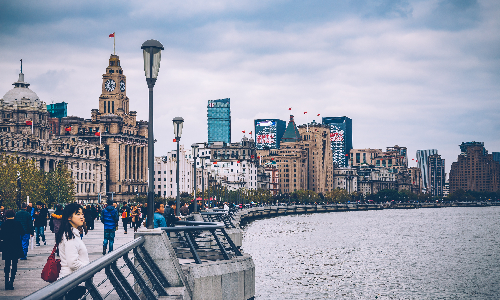
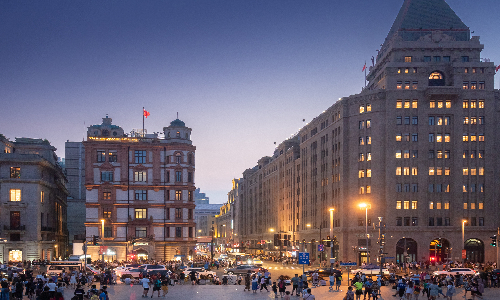
In the morning, you will go to the Shanghai Jewish Refugees Museum (closed each Monday). This building was built originally as a private house in 1907. Later on, Russian Jews collected money and moved a Moses synagogue they had built elsewhere to this place, making it a synagogue shared by Russian Jews and Central European Jews. This museum has stored many videos, suitcases, ferry tickets, and certificates of Jewish refugees when they fled Europe during World War II. During the World War II, about 25,000 Jews left for Shanghai, which was the only city that Jews could enter without a visa to avoid the Nazi massacre. And the Jews in Shanghai made arduous efforts to survive in this place and lived a stable life.
And then we will get to Huoshan Park. Before 1917, this place acted as an adventure playground, and later it was rebuilt as a park opening to the public. During the World War II, this park provided shelter for Jewish refugees. With the support of the Chinese government, the Israeli government and enterprises financed to build a hospice for the Jewish refugees at the park. Have a walk in the park and you will learn more about the history of the Jews in Shanghai.
After lunch, your tour guide will take you to the Yu Garden (closed each Monday). The Yu Garden is a classical garden in the south of China. It was built in the Ming Dynasty, covering an area of 20,000 square meters. During your visit, you will see a 2.3-meter-high stone placed upright on a corridor, the Taihu Stone. This stone is an irregular long strip, with the middle thinner than the two ends, just like a beautiful slender-waisted woman standing there. Besides, the Wanhua Chamber, Hexu Hall, and Huijing Tower are also worthwhile visiting. I’m sure you will enjoy yourself in the garden.
After having a walk in the Yu Garden, we will head to the Shanghai Oriental Pearl TV Tower. This TV tower came into service in 1994. It is 468 meters in height, and it is one of the best places to have a panoramic view of Shanghai. Therefore, as soon as we get to the TV tower, we will directly go up to the observation deck and overlook the prosperous Shanghai. If you look down, you will see that the Huangpu River lay on the ground, flowing to the east. I can assure you that you can enjoy the unmatched views of Shanghai at this height.
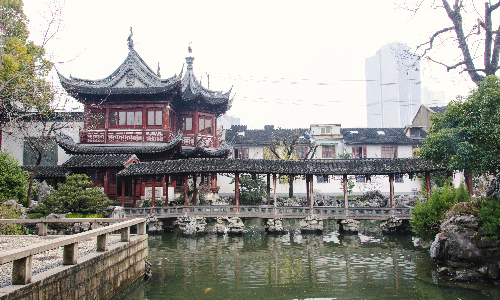
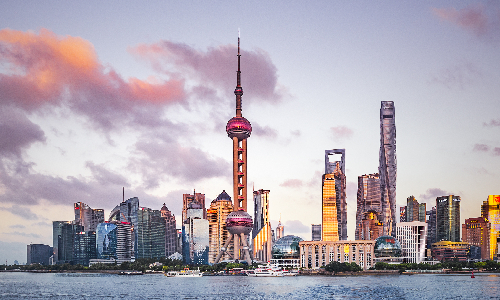
Today, your 11-day China Jewish tour comes to an end. I hope you have had a great time in China. Your tour guide will escort you to the airport and say goodbye to you. We look forward to seeing you again.
Editor: Chi Mengdi
Proofreader: Summer Hou
| City | Five Star hotel list | Four Star hotel list |
|---|---|---|
| Beijing | Sunworld Dynasty Hotel Beijing Wangfujing | Sunworld Hotel Wangfujing |
| Zhengzhou | Yuda Palace Hotel | Holiday Inn Express Zhengzhou Zhengdong |
| Kaifeng | Sheraton Kaifeng | Pullman Kaifeng Jianye |
| Luoyang | Lee Royal Hotel Mudu | Xinyuan International Hotel |
| Xi'an | Tianyu Gloria Grand Hotel Xi'an | Sunworld Dynasty Hotel |
| Shanghai | Ocean Hotel Shanghai | Courtyard by Marriott Shanghai Central |
 |
![]() About your child or infant, please contact us for a discounted price.
About your child or infant, please contact us for a discounted price.



We started with a few days in Beijing & ended in Shanghai, from where we visited the Forbidden City and Great Wall. In between we visited Terra Cotta Warriors Museum, Panda Base, Shanghai Disneyland.

We had a wonderful holiday in China which will remain long in the memory. China is a breathtakingly beautiful country full of splendid temples and palaces, mountains and rivers, peaceful rural scenes and bustling shopping streets.
 QUICK ENQUIRY
QUICK ENQUIRY